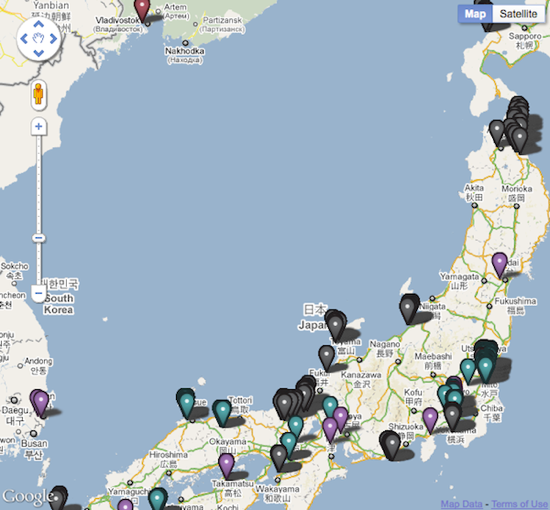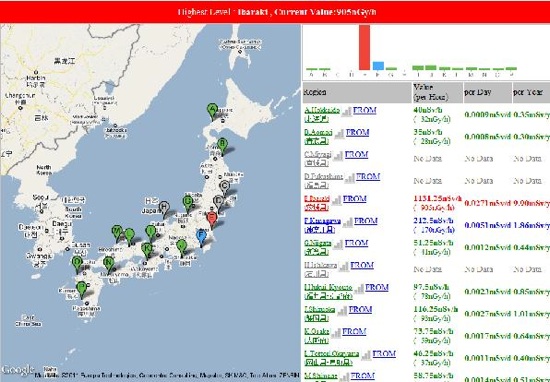 Map: RTDN.org and Google Maps
Map: RTDN.org and Google Maps
What if Foursquare were good for something? It might look a little like this. Crowd-sourced maps of radiation in Japan allow anyone with a radiation detector to log their reading, resulting in real-time information with potentially as many data points as there are users. RTDN.org, put together by Portland's Uncorked Studios, took three days and zero dollars to get running, and in addition to telling users how to upload data it also provides info on buying a detection device.
 Map: Stubbytour.com and Google Maps
Map: Stubbytour.com and Google Maps
Korean firm ISELSoft's Stubby map doesn't use Everyman Power — its readings are sniffed out by web bots from various sensors across Asia. But the technology allows all those data points to be collected in one place, along with color-coding and graphs to make the data easy to understand.
Especially if you're not sure that official sources are giving you the full story, this type of bottom-up database is invaluable. Imagine what else it could be used for — water pollution? Solar potential? Fresh food access? Walkability? A couple thousand heads are way better than one, so harnessing the hivemind could be a huge boon across the board.



